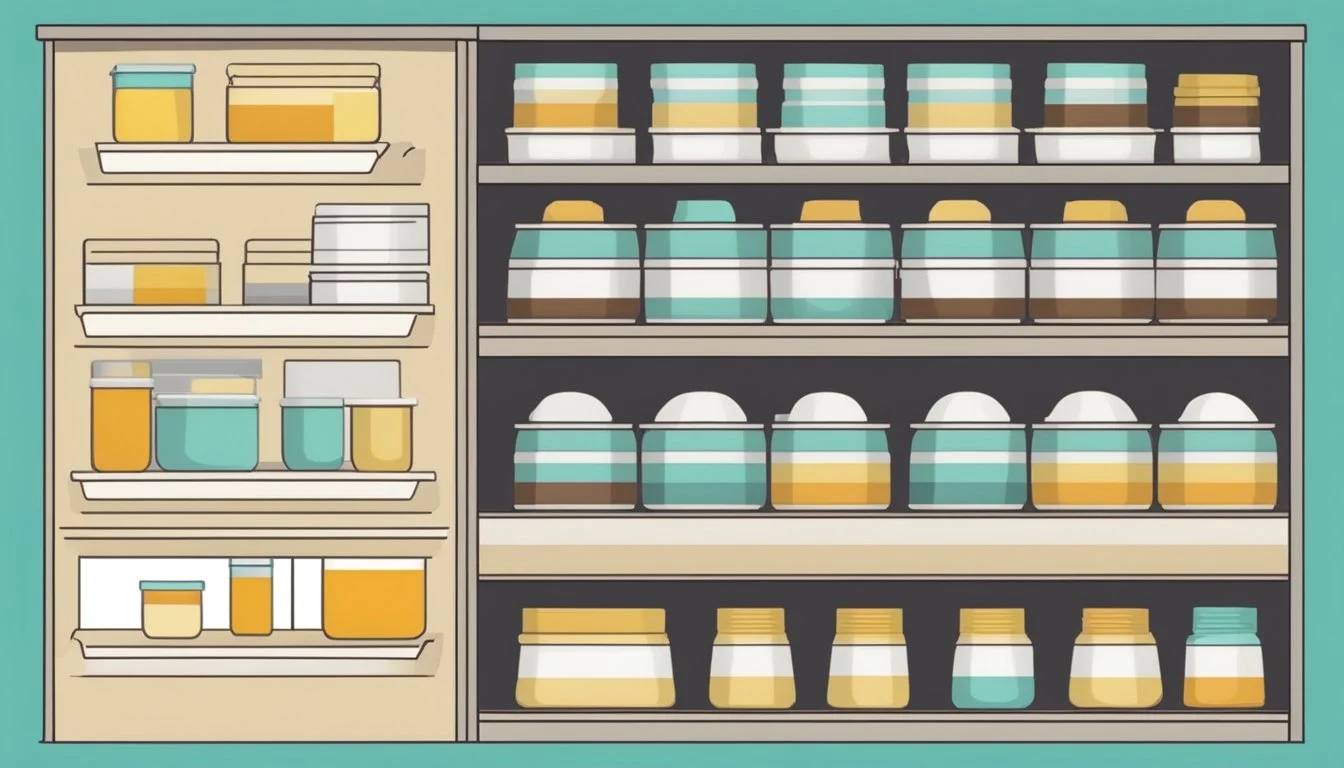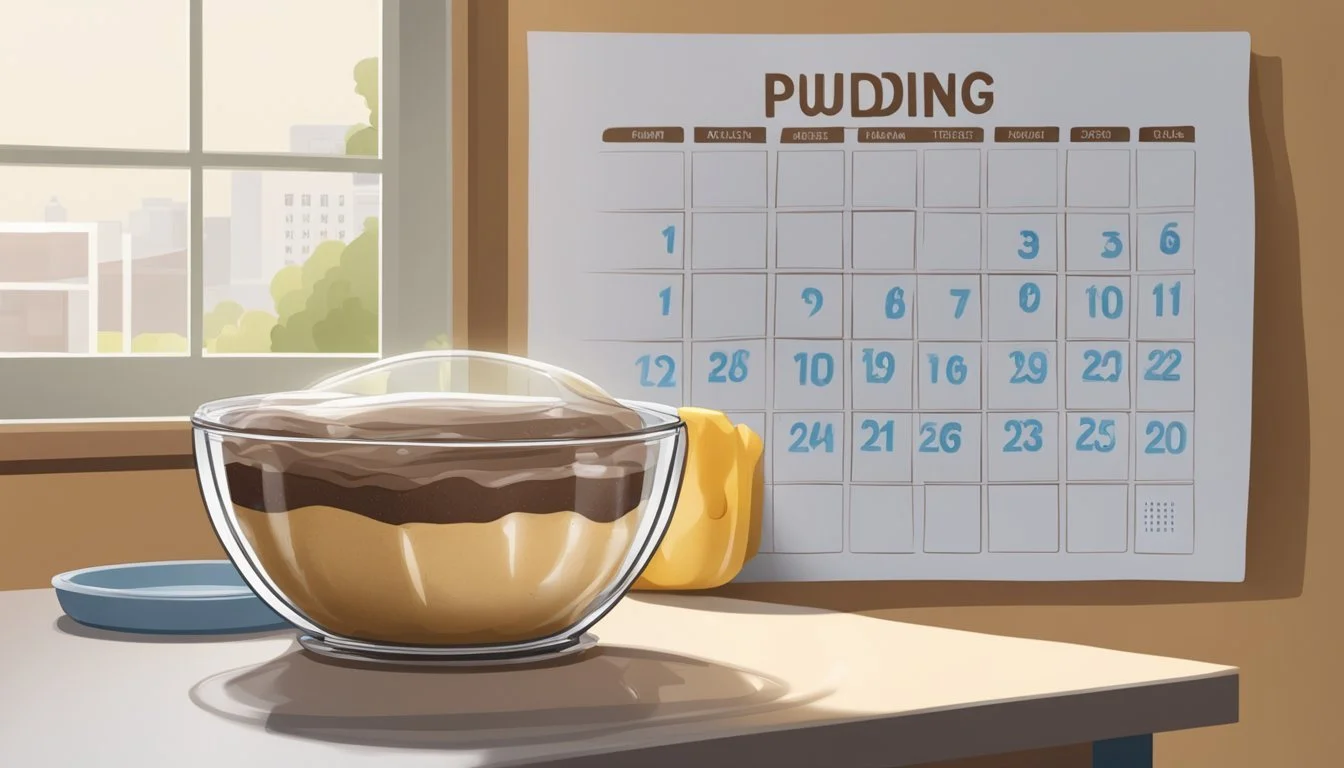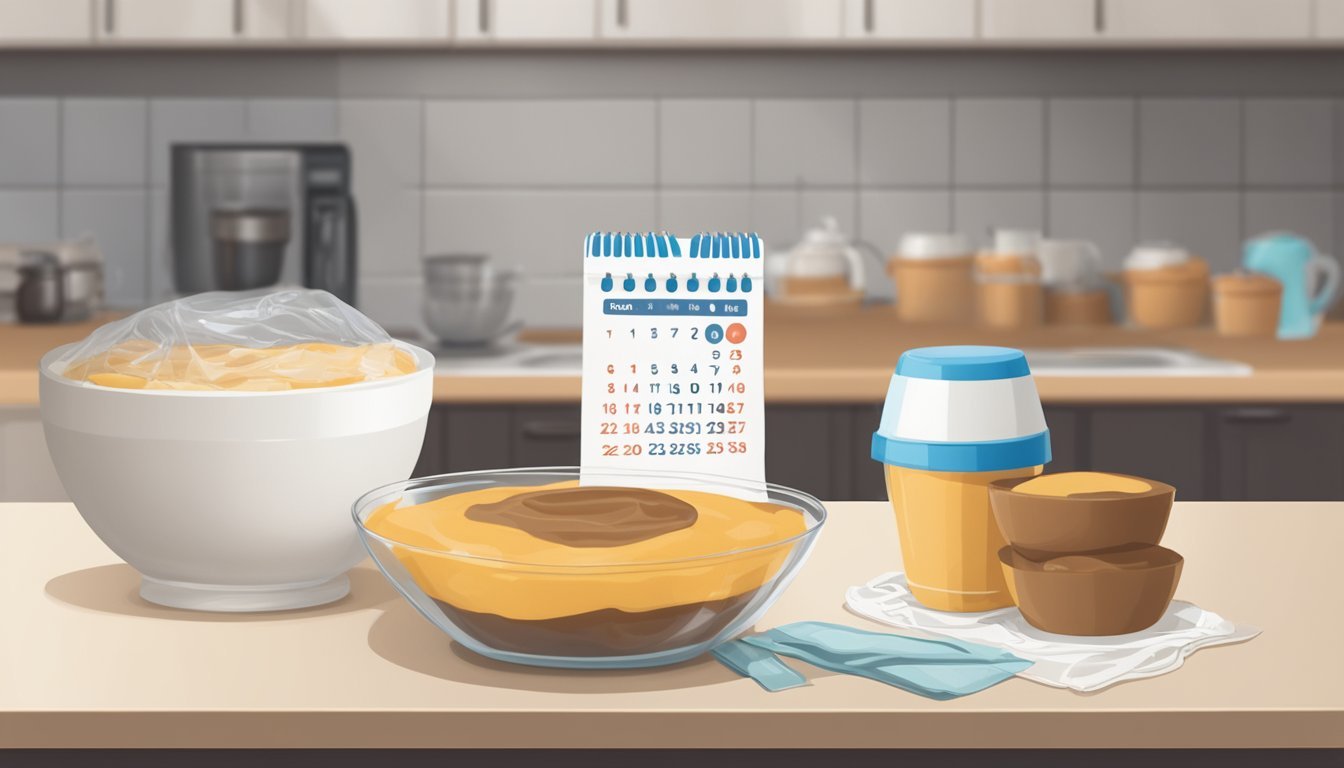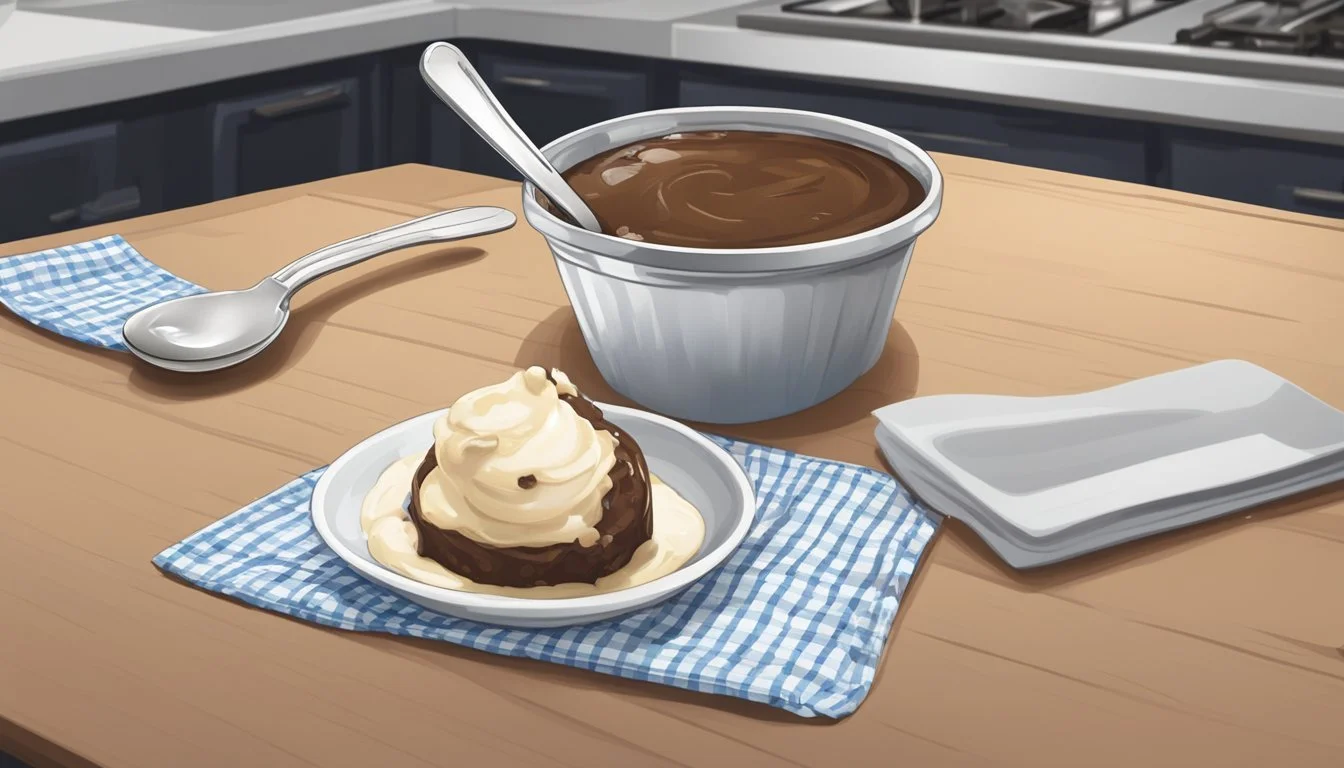How Long Does Pudding Last?
Shelf Life and Storage Tips
Pudding, a creamy dessert enjoyed by people of various ages and cultures, has a variable shelf life depending on several factors. For those who enjoy the convenience of prepared pudding, it typically lasts about one week in the refrigerator once opened. The perishability of prepared pudding is mainly due to its dairy content and the presence of other ingredients that can spoil over time.
In contrast, unopened packaged dry pudding mix has a much longer shelf life and can last for months beyond its "best by" date. This extended longevity is due to the dry environment of the mix, which inhibits the growth of bacteria and mold. It's essential to store pudding properly to ensure that its flavor and texture remain of the highest quality for as long as possible. Proper storage means keeping unopened pudding mix in a cool, dry place, and keeping prepared pudding refrigerated and tightly sealed.
Homemade pudding and made instant pudding contain fresh ingredients like milk, cream, and eggs, which means that they typically should be consumed within a week when stored properly at or below 40°F. Similar to prepared pudding, these versions of pudding need to be refrigerated in airtight containers to maintain their freshness and prevent the growth of bacteria. Regardless of the type, always check for signs of spoilage, such as an off smell or discoloration, before consuming pudding that has been stored for any length of time.
Types of Pudding
Pudding varieties are determined by their base ingredients and preparation methods, ranging from traditional dairy-based to innovative non-dairy alternatives, as well as the convenience of instant mixes versus the traditional cooking process.
Dairy-Based Puddings
Dairy-based puddings typically include milk or cream as a primary ingredient, providing a rich and creamy texture. Common examples include:
Chocolate Pudding: Made with milk, sugar, chocolate, and a thickening agent like cornstarch.
Vanilla Pudding: Combines milk, sugar, and vanilla essence, thickened with ingredients such as eggs or cornstarch.
Banana Pudding: Often layers vanilla pudding with bananas and cookies or wafers.
Rice Pudding: Cooks rice in milk or cream and sweetened typically with sugar, sometimes including spices like cinnamon.
Non-Dairy Alternatives
Non-dairy puddings cater to vegan or lactose-intolerant diets, utilizing alternatives like soy milk, almond milk, and coconut milk. These options replicate the creamy texture without using animal-based products. Key non-dairy puddings include:
Vegan Chocolate Pudding: Utilizes non-dairy milk and might incorporate tofu for creaminess.
Coconut Milk Custard: A custard variant using coconut milk as the base, thickened with cornstarch or similar agents.
Instant Vs. Cooked Pudding Mixes
Instant and cooked puddings differ significantly in preparation time and ingredients:
Instant Pudding: Requires no cooking and simply needs the addition of cold milk. It thickens due to pre-gelatinized starch in the mix.
Cooked Pudding Mixes: Need to be cooked on the stove with milk, allowing the thickening agents in the mix, like cornstarch, to activate.
Type Base Ingredient Typical Thickening Agent Instant Pudding Dry Pudding Mix Pre-gelatinized Starch Cooked Pudding Milk / Non-dairy milk Cornstarch / Eggs
Both instant and cooked puddings have a variety of flavors, such as chocolate or vanilla, catering to diverse tastes and preferences.
Storage Guidelines
Proper storage is crucial to maintain the quality and extend the shelf life of pudding. Whether refrigerated, frozen, or kept in the pantry, understanding the correct storage techniques prevents spoilage and preserves flavor.
Refrigerating Puddings
When refrigerating, one should store pudding in the fridge at or below 40°F to maintain freshness. Prepared pudding lasts for 1 week when kept in an airtight container to protect it from absorbing other odors. Store-bought pudding should be refrigerated following the same guidelines, although it could last for 3-4 weeks due to the presence of preservatives.
Freezing Techniques
One can freeze pudding to extend its shelf life, with proper techniques being essential to ensure quality. Freezing pudding in air-tight containers or heavy-duty ziplock bags is recommended to prevent freezer burn. When ready to consume, thaw the pudding in the refrigerator. However, note that freezing may alter the texture due to the stabilizers present in the pudding.
Pantry and Cupboard Storage
Unopened dry pudding mixes are suitable for pantry or cupboard storage. They will generally last for up to a month beyond the 'best by' date if kept in a cool, dry place. Once opened, transfer the remaining pudding mix to an airtight container to prevent moisture from entering, which could compromise quality.
Shelf Life Details
The shelf life of pudding varies based on whether it's store-bought, homemade, or prepared from a mix. Factors such as storage conditions, the presence of preservatives, the type of thickening agent, and whether the pudding contains dairy or eggs play key roles in determining freshness and safety.
Unopened Store-Bought Puddings
Unopened store-bought puddings typically have a long shelf life. Dry pudding mixes can last several months past the package's best before date if kept in a cool, dry environment. In contrast, unopened ready-to-eat pudding cups should be consumed by the expiration date on the package for optimal quality.
Opened and Prepared Puddings
Once store-bought puddings are opened or prepared puddings are made, refrigeration is necessary to maintain freshness. Prepared pudding can last:
1 week in the refrigerator
It should be stored in an airtight container to minimize exposure to air and potential contaminants.
Food safety is critical; one should inspect opened and prepared puddings for any signs of spoilage—such as an off smell or color changes—before consumption, regardless of the number of days passed.
Homemade Pudding Freshness
Homemade pudding's freshness can be affected by ingredients like eggs and milk:
Typically, it should be eaten within 4-7 days when stored properly in the refrigerator.
Freshness is best preserved by prompt refrigeration after cooking and cooling to room temperature, which should not exceed two hours to prevent bacterial growth.
Compliance with these guidelines will ensure food safety and enjoyable quality of all types of pudding.
Recognizing Spoilage
When it comes to pudding, recognizing the signs of spoilage is key to ensuring food safety. It is important to look out for visual changes, off-putting smells, and alterations in texture and taste that indicate spoilage.
Visual and Olfactory Indicators
One can detect spoilage in pudding through several visual and olfactory signs. These include:
Color changes: Pudding that has an unusual color, particularly spots of green or black, may indicate mold growth.
Presence of mold: Mold can appear on the surface or throughout the pudding, indicating bacterial activity and spoilage.
Unpleasant smell: Spoiled pudding often emits a distinctive, sour or off-smell that deviates from its original, sweet aroma.
Changes in Texture and Taste
Spoilage also affects the texture and taste of pudding:
Texture changes: A pudding's consistency should be smooth and creamy. If it appears lumpy or if there is liquid floating on the surface, it means the pudding has likely spoiled.
Taste alteration: Pudding that has a sour or unpleasant flavor is a clear sign of spoilage, and it should not be consumed.
Health Considerations
When considering the health implications of pudding consumption, it is crucial to be aware of the food safety aspects, including the risk of food poisoning, and understand the nutritional value and ingredients involved.
Food Poisoning Risks
Pudding, especially varieties that are dairy-based and include eggs, is susceptible to bacterial growth that can lead to food spoilage and food poisoning if not stored correctly. Bacteria such as Salmonella and Escherichia coli can multiply rapidly when pudding is kept at temperatures above 40°F. It's imperative to refrigerate pudding promptly and consume it within the recommended time frame. Expired pudding should be assessed for spoilage signs like an off smell, discoloration, or the presence of mold before consumption, as these are indicators of potential bacterial contamination.
Nutritional Value and Ingredients
The nutritional profile of pudding can vary greatly based on the ingredients used. A typical pudding consists of:
Sugar: Provides the sweetness but adds to the caloric content.
Fats: Present in dairy or added oils; contribute to the flavor and texture.
Calories: Vary depending on the types and amounts of ingredients used.
Some puddings may contain artificial flavors, preservatives, or additives that can affect their nutritional value. For individuals observing their dietary intake, it's beneficial to consider the sugar, fats, and calories in pudding and how these fit into their overall nutritional goals. While pudding can be a part of a balanced diet, moderation is key, and individuals should look for options that align with their dietary needs and restrictions.
Best Practices
Ensuring the longevity and safety of pudding involves adherence to proper storage and handling methods. These best practices are essential to maintain the dessert's quality and prevent foodborne illnesses.
Packaging and Sealing
For unopened store-bought pudding, the original packaging is typically sufficient to ensure freshness up to the sell-by date. Once opened or for homemade pudding, it should be transferred to an airtight container to prevent the entry of air and contaminants. Using a vacuum sealer can further extend its shelf life by removing air from the packaging.
Homemade Pudding: Store in an airtight container immediately after cooling.
Store-Bought Pudding: Keep sealed; once open, transfer to an airtight container.
Labeling and Tracking
Labelling pudding with labels or markers can help track when the dish was made or opened. Include the date of storage on the container alongside the estimated expiration date, typically 1 week for prepared pudding.
Label Example: "Chocolate Pudding - Made on 03/05/2024, Consume by 03/12/2024".
Serving and Reheating
When serving pudding, only take out the needed portion to avoid the introduction of bacteria into the entire dish. For leftovers, keep them sealed in the container and refrigerate promptly after the meal. If reheating is necessary, ensure the pudding reaches an even temperature throughout, but avoid multiple reheating cycles.
Individual servings: Place in separate containers if preferable to avoid reheating multiple times.
Reheating: Do so cautiously, ensuring the dish has reached a uniform temperature before serving.
Special Considerations
When considering the longevity of pudding, one must account for variation due to special ingredients or circumstances related to holiday and seasonal preparations, as well as added flavor enhancements that may affect shelf life.
Holiday and Seasonal Puddings
Homemade Christmas pudding often contains alcohol, such as brandy or rum, which acts as a natural preservative. Therefore, this type of seasonal pudding can last much longer than typical homemade puddings. For example, when properly sealed and stored in a cool, dry place, it can remain consumable for up to a year without significant loss of quality.
The inclusion of alcohol in these puddings not only extends shelf life but also adds complexity to their flavor. It is important, however, to ensure they are kept away from heat sources to prevent spoilage.
Flavor Enhancements
Store-bought puddings often incorporate additional flavorings and preservatives to extend their shelf life. For instance, puddings with flavor enhancements like vanilla, chocolate, or strawberry might have different expiration dates influenced by the stability of these added flavorings.
Vanilla and chocolate puddings often include stable ingredients such as vanilla extract or cocoa powder, which do not significantly alter shelf life.
Flavorings in store-bought options can sometimes be deceiving, as artificial or natural flavorings don't usually affect the expiration date but serve to improve taste over time.
It's important to note that while flavor enhancements may add to the sensory experience, they should not be solely relied upon for determining the product's longevity and consumers should always refer to the expiration dates provided and use sensory checks for quality assurance.









